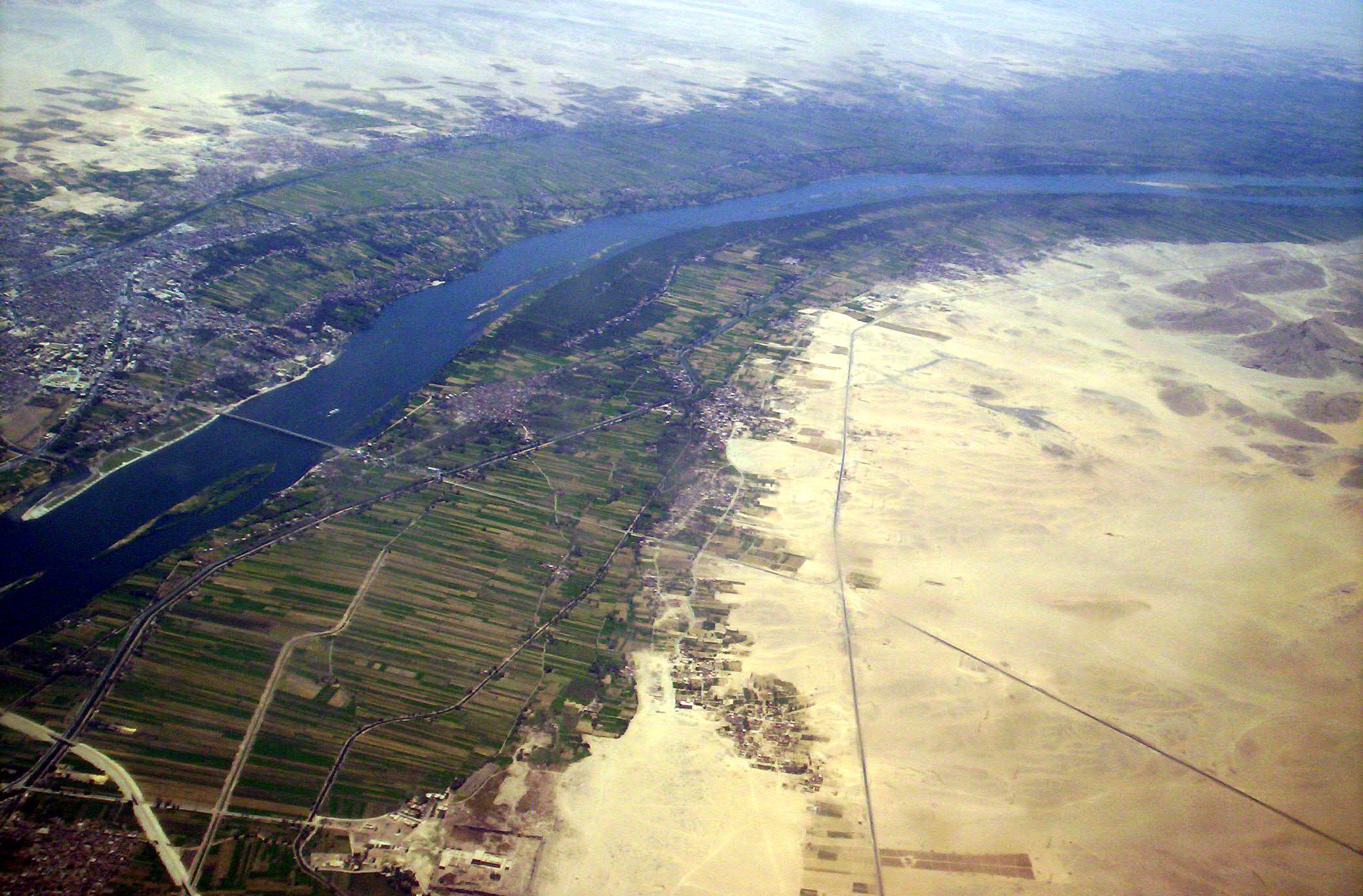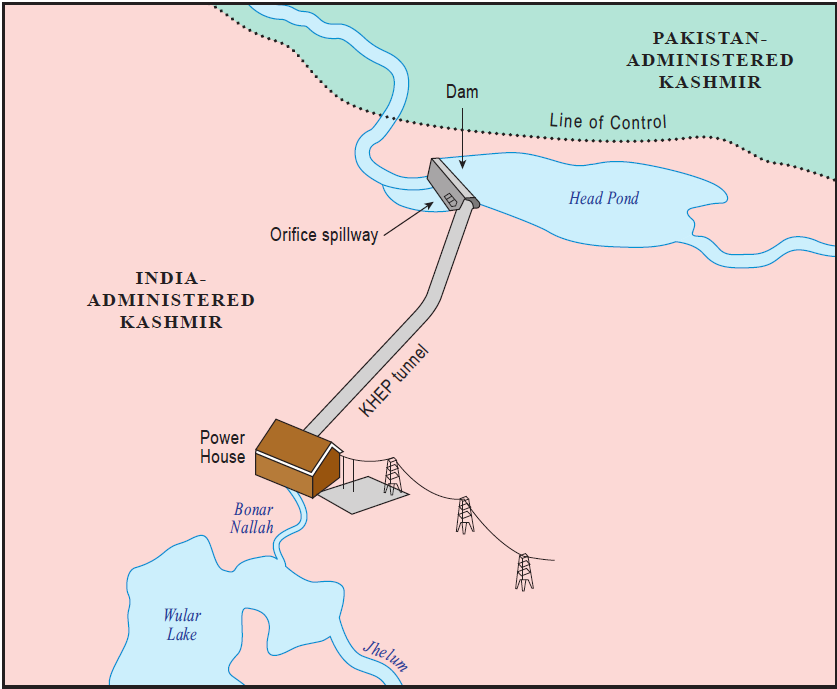|
Permanent Indus Commission
The Permanent Indus Commission (PIC) is a bilateral commission consisting of officials from India and Pakistan, created to implement and manage the goals and objectives and outlines of the Indus Waters Treaty (IWT). Indus Waters Treaty After prolonged talks between the governments of India and Pakistan, the IWT was signed in September 1960 with World Bank standing guarantee for any dispute resolution. Broadly, according to this treaty, waters of the three western rivers (the Jhelum, the Chenab, and the Indus itself) were allocated to Pakistan, and those of the three eastern rivers (the Ravi, the Beas, and the Sutlej) were allocated to India. All these six rivers together called as Indus System of Rivers (ISR). PIC is the channel of correspondence between the two countries for the purpose of IWT and first step for conflict resolution. If an agreement cannot be reached at the PIC level, the dispute can be referred to a Neutral Expert for the differences already identified in the tre ... [...More Info...] [...Related Items...] OR: [Wikipedia] [Google] [Baidu] |
India
India, officially the Republic of India (Hindi: ), is a country in South Asia. It is the seventh-largest country by area, the second-most populous country, and the most populous democracy in the world. Bounded by the Indian Ocean on the south, the Arabian Sea on the southwest, and the Bay of Bengal on the southeast, it shares land borders with Pakistan to the west; China, Nepal, and Bhutan to the north; and Bangladesh and Myanmar to the east. In the Indian Ocean, India is in the vicinity of Sri Lanka and the Maldives; its Andaman and Nicobar Islands share a maritime border with Thailand, Myanmar, and Indonesia. Modern humans arrived on the Indian subcontinent from Africa no later than 55,000 years ago., "Y-Chromosome and Mt-DNA data support the colonization of South Asia by modern humans originating in Africa. ... Coalescence dates for most non-European populations average to between 73–55 ka.", "Modern human beings—''Homo sapiens''—originated in Africa. Then, int ... [...More Info...] [...Related Items...] OR: [Wikipedia] [Google] [Baidu] |
Tulbul Project
Wular Lake (), also known as Wolar () in Kashmiri, is one of the largest fresh water lakes in South Asia. It is located near Bandipora town in Bandipora district of Jammu and Kashmir, India. The lake basin was formed as a result of tectonic activity and is fed by the Jhelum River and stream madhumati. The lake's size varies seasonally from 30 to 189 square kilometres. In addition, much of the lake has been drained as a result of willow plantations being built on the shore in the 1950s. Etymology In ancient times, Wular Lake was also called Mahapadmasar (Sanskrit: महापद्मसरः). Nilamata Purana also mentions it as ''Mahapadmasaras''. The lake, with its big dimensions and the extent of water, gives rise to high leaping waves in the afternoons, called Ullola in Sanskrit, meaning "stormy leaping, high rising waves". Therefore, it was also being called ''Ullola''. It is believed to have gotten corrupted over the centuries to ''Wulor'' or ''Wular''. [...More Info...] [...Related Items...] OR: [Wikipedia] [Google] [Baidu] |
Water Management Authorities In India
Water (chemical formula ) is an inorganic, transparent, tasteless, odorless, and nearly colorless chemical substance, which is the main constituent of Earth's hydrosphere and the fluids of all known living organisms (in which it acts as a solvent). It is vital for all known forms of life, despite not providing food, energy or organic micronutrients. Its chemical formula, H2O, indicates that each of its molecules contains one oxygen and two hydrogen atoms, connected by covalent bonds. The hydrogen atoms are attached to the oxygen atom at an angle of 104.45°. "Water" is also the name of the liquid state of H2O at standard temperature and pressure. A number of natural states of water exist. It forms precipitation in the form of rain and aerosols in the form of fog. Clouds consist of suspended droplets of water and ice, its solid state. When finely divided, crystalline ice may precipitate in the form of snow. The gaseous state of water is steam or water vapor. Water c ... [...More Info...] [...Related Items...] OR: [Wikipedia] [Google] [Baidu] |
Water Conflicts
Water conflict is a term describing a conflict between countries, states, or groups over the rights to access water resources. The United Nations recognizes that water disputes result from opposing interests of water users, public or private. A wide range of water conflicts appear throughout history, though rarely are traditional wars waged over water alone. Instead, water has historically been a source of tension and a factor in conflicts that start for other reasons. Water conflicts arise for several reasons, including territorial disputes, a fight for resources, and strategic advantage. Water conflicts can occur on the intrastate and interstate levels. Interstate conflicts occur between two or more neighboring countries that share a transboundary water source, such as a river, sea, or groundwater basin. For example, the Middle East has only 1% of the world's freshwater shared among 5% of the world's population. Intrastate conflicts take place between two or more parties in the ... [...More Info...] [...Related Items...] OR: [Wikipedia] [Google] [Baidu] |
Indus Basin
The Indus ( ) is a transboundary river of Asia and a trans-Himalayan river of South and Central Asia. The river rises in mountain springs northeast of Mount Kailash in Western Tibet, flows northwest through the disputed region of Kashmir, Quote: "Kashmir, region of the northwestern Indian subcontinent. It is bounded by the Uygur Autonomous Region of Xinjiang to the northeast and the Tibet Autonomous Region to the east (both parts of China), by the Indian states of Himachal Pradesh and Punjab to the south, by Pakistan to the west, and by Afghanistan to the northwest. The northern and western portions are administered by Pakistan and comprise three areas: Azad Kashmir, Gilgit, and Baltistan, ... The southern and southeastern portions constitute the Indian state of Jammu and Kashmir. The Indian- and Pakistani-administered portions are divided by a "line of control" agreed to in 1972, although neither country recognizes it as an international boundary. In addition, China became ... [...More Info...] [...Related Items...] OR: [Wikipedia] [Google] [Baidu] |
India–Pakistan Relations
India–Pakistan relations are the bilateral ties between the Republic of India and the Islamic Republic of Pakistan. The two countries have a complex and largely hostile relationship that is rooted in a multitude of historical and political events, most notably the partition of British India in August 1947; the India–Pakistan border is one of the most militarised international boundaries in the world. Northern India and most of modern-day Pakistan overlap with each other in terms of their common Indo-Aryan demographic, natively speaking a variety of Indo-Aryan languages (mainly Punjabi, Sindhi, and Hindi–Urdu). Two years after World War II, the United Kingdom formally dissolved British India, dividing it into two new sovereign nations: the Dominion of India and the Dominion of Pakistan. The partitioning of the former British colony resulted in the displacement of up to 15 million people, with the death toll estimated to have reached between several hundred thousand and ... [...More Info...] [...Related Items...] OR: [Wikipedia] [Google] [Baidu] |
International Court Of Arbitration
ICC International Court of Arbitration is an institution for the resolution of international commercial disputes. It operates under the auspices of the International Chamber of Commerce and consists of more than 100 arbitrators from roughly 90 countries. Contrary to what its name suggests, the ICC does not issue formal judgements. Instead, it provides "judicial supervision of arbitration proceedings." The court's official working languages are English and French. However, cases can be administered in any language. The headquarters of the ICC is in Paris, France. As of 9 January 2020, the court has registered 25,000 cases since its creation. It also saw a record number of cases registered in 2019, an indication of the ICC's efforts to expand its services in recent years. Background The Court was founded in 1923 under the leadership of the ICC's first president Étienne Clémentel Étienne Clémentel (11 January 1864 – 25 December 1936) was a French politician. He served a ... [...More Info...] [...Related Items...] OR: [Wikipedia] [Google] [Baidu] |
International Court Of Justice
The International Court of Justice (ICJ; french: Cour internationale de justice, links=no; ), sometimes known as the World Court, is one of the six principal organs of the United Nations (UN). It settles disputes between states in accordance with international law and gives advisory opinions on international legal issues. The ICJ is the only international court that adjudicates general disputes between countries, with its rulings and opinions serving as primary sources of international law. The ICJ is the successor of the Permanent Court of International Justice (PCIJ), which was established in 1920 by the League of Nations. After the Second World War, both the league and the PCIJ were replaced by the United Nations and ICJ, respectively. The Statute of the ICJ, which sets forth its purpose and structure, draws heavily from that of its predecessor, whose decisions remain valid. All member states of the UN are party to the ICJ Statute and may initiate contentious cases; ho ... [...More Info...] [...Related Items...] OR: [Wikipedia] [Google] [Baidu] |
Ratle Hydroelectric Plant
The Ratle Hydroelectric Plant is a run-of-the-river hydroelectric power station currently under construction on the Chenab River, downstream of the village near Drabshalla in Kishtwar district of the Indian Union Territory of Jammu and Kashmir. The project includes a tall gravity dam and two power stations adjacent to one another. Water from the dam will be diverted through four intake tunnels about southwest to the power stations. The main power station will contain four 205 MW Francis turbines and the auxiliary power station will contain one 30 MW Francis turbine. The installed capacity of both power stations will be 850 MW. On 25 June 2013, Prime Minister Manmohan Singh laid the foundation stone for the dam. Pakistan has frequently alleged that it violates the Indus Waters Treaty. Project Status * As of June 2015, the project is yet to start. * In August 2017, the World Bank allowed India to construct the dam. It happened after Pakistan alleged that the construction ... [...More Info...] [...Related Items...] OR: [Wikipedia] [Google] [Baidu] |
Kishanganga Hydroelectric Plant
The Kishanganga Hydroelectric Project is a run-of-the-river hydroelectric scheme in Jammu and Kashmir, India. Its dam diverts water from the Kishanganga River to a power plant in the Jhelum River basin. It is located near Dharmahama Village, north of Bandipore in the Kashmir valley and has an installed capacity of 330 MW. Construction on the project began in 2007 and was expected to be complete in 2016. It was halted in 2011 due to a dispute with Pakistan under the Indus Water Treaty, which went to a court of arbitration. Pakistan protested the effect of the project on the flow of the Kishanganga River to downstream areas in Pakistan-administered Kashmir. In December 2013, the Court ruled that India could divert water for power generation while ensuring a minimum flow of 9 cumecs (m3/s) downstream to Pakistan. [...More Info...] [...Related Items...] OR: [Wikipedia] [Google] [Baidu] |
Baglihar Dam
Baglihar Dam (Hindi: ''Baglihār Bāndh''), also known as Baglihar Hydroelectric Power Project, is a run-of-the-river power project on the Chenab River in the Ramban district of Jammu and Kashmir, India. The first power project executed by the Jammu and Kashmir Power Development Corporation, it was conceived in 1992 and approved in 1996, with construction begun in 1999. The project was estimated to cost US$1 billion. The project consists of two-stage of 450MW each. The first stage of the project was completed in 2008-09 and was dedicated to the nation by the Prime Minister Manmohan Singh of India. The second stage of the project was completed in 2015–16, and was subsequently dedicated to the nation by the Prime Minister Narendra Modi of India.Baglihar Briefing Kashmir Life, 11 November 2015. [...More Info...] [...Related Items...] OR: [Wikipedia] [Google] [Baidu] |




.jpg)
